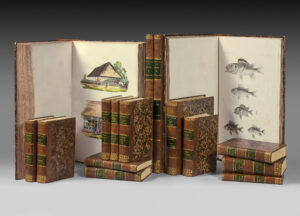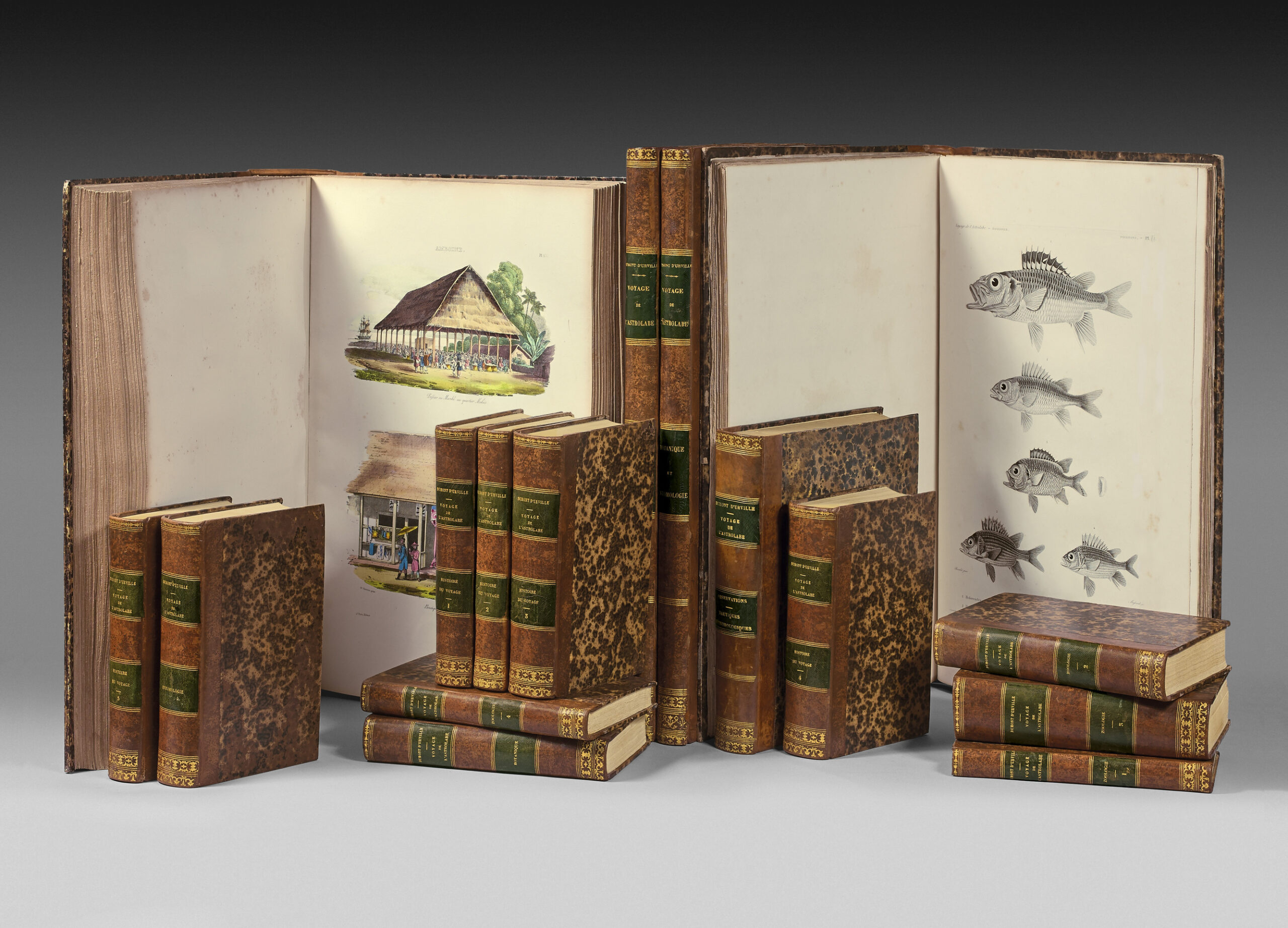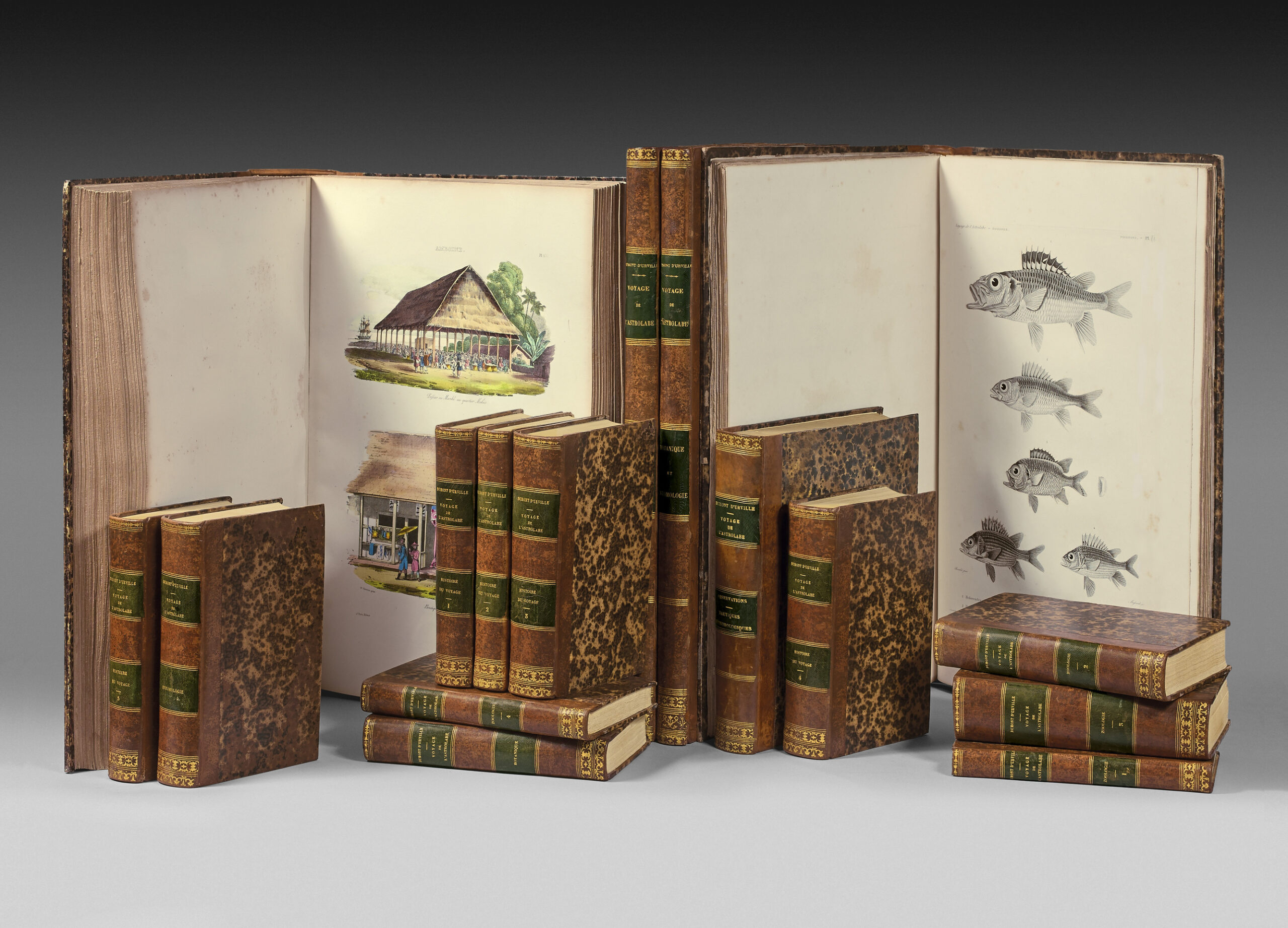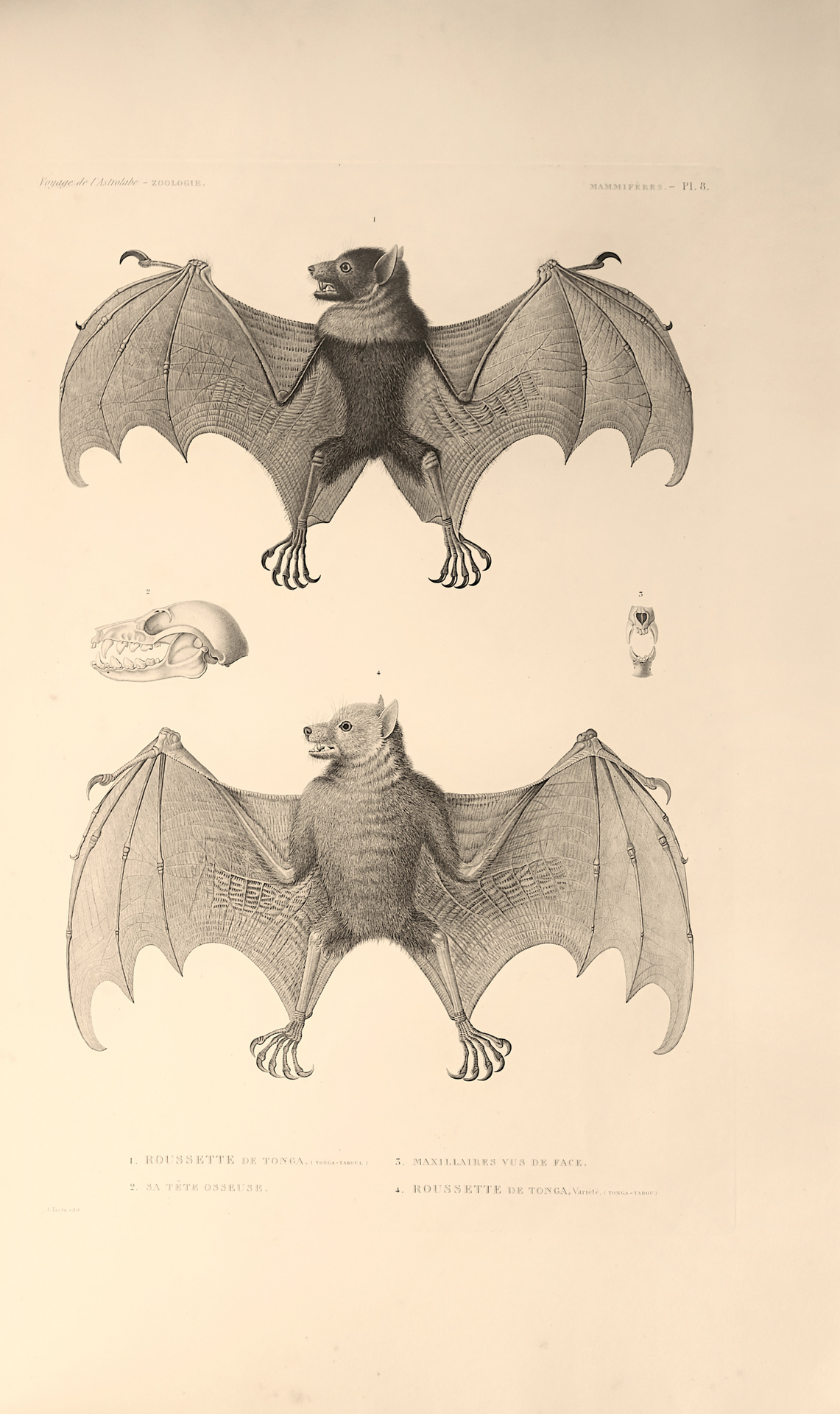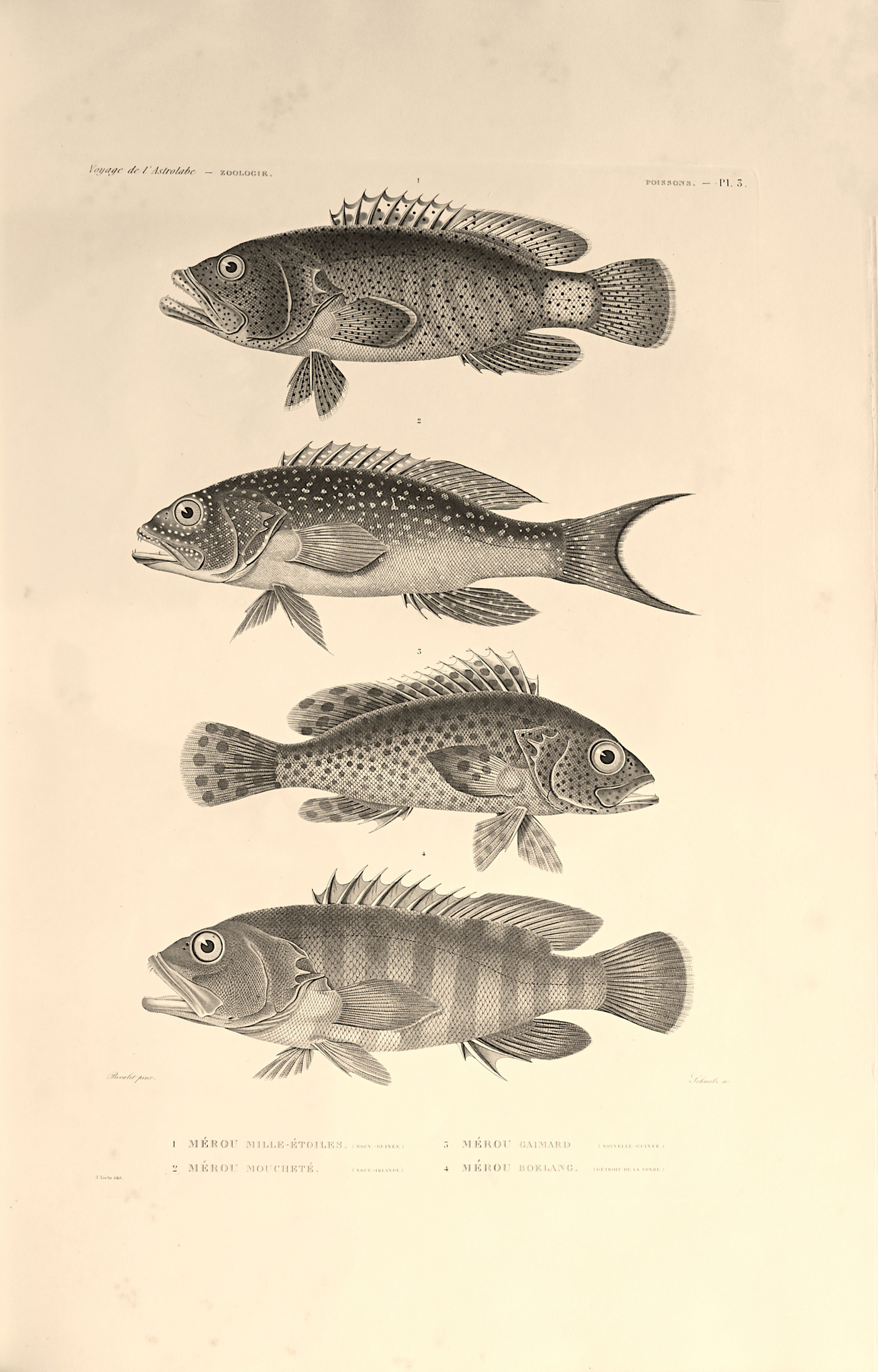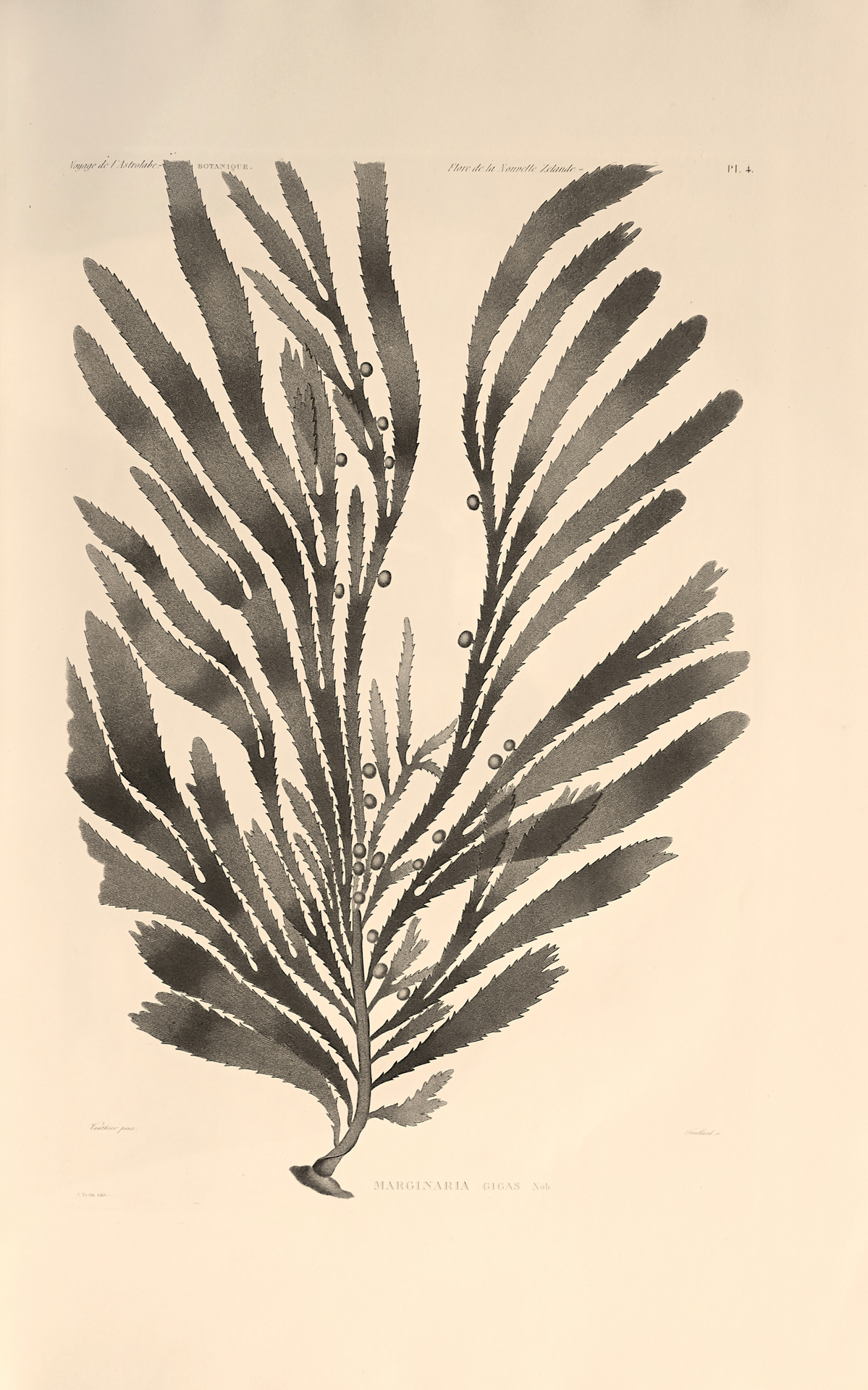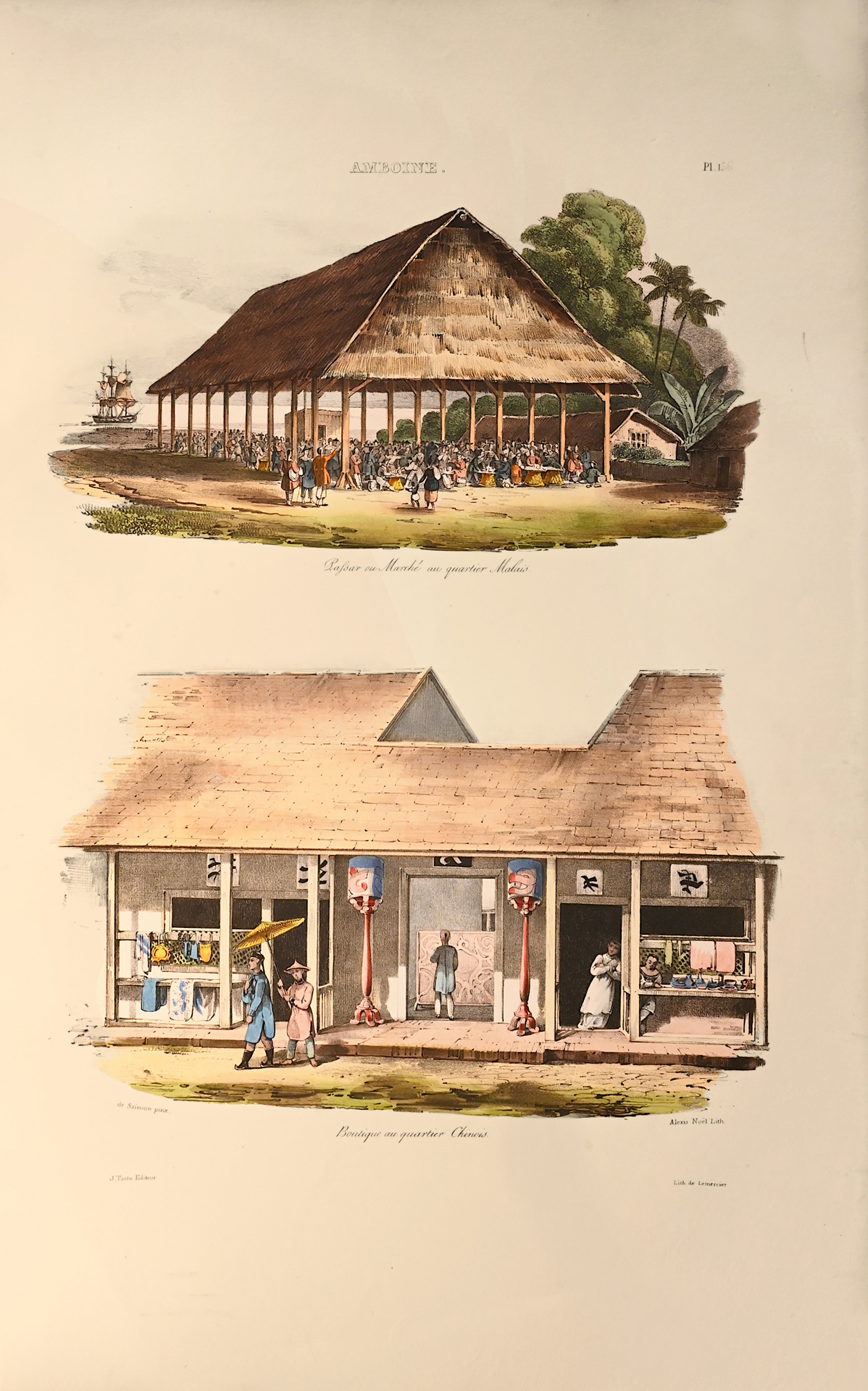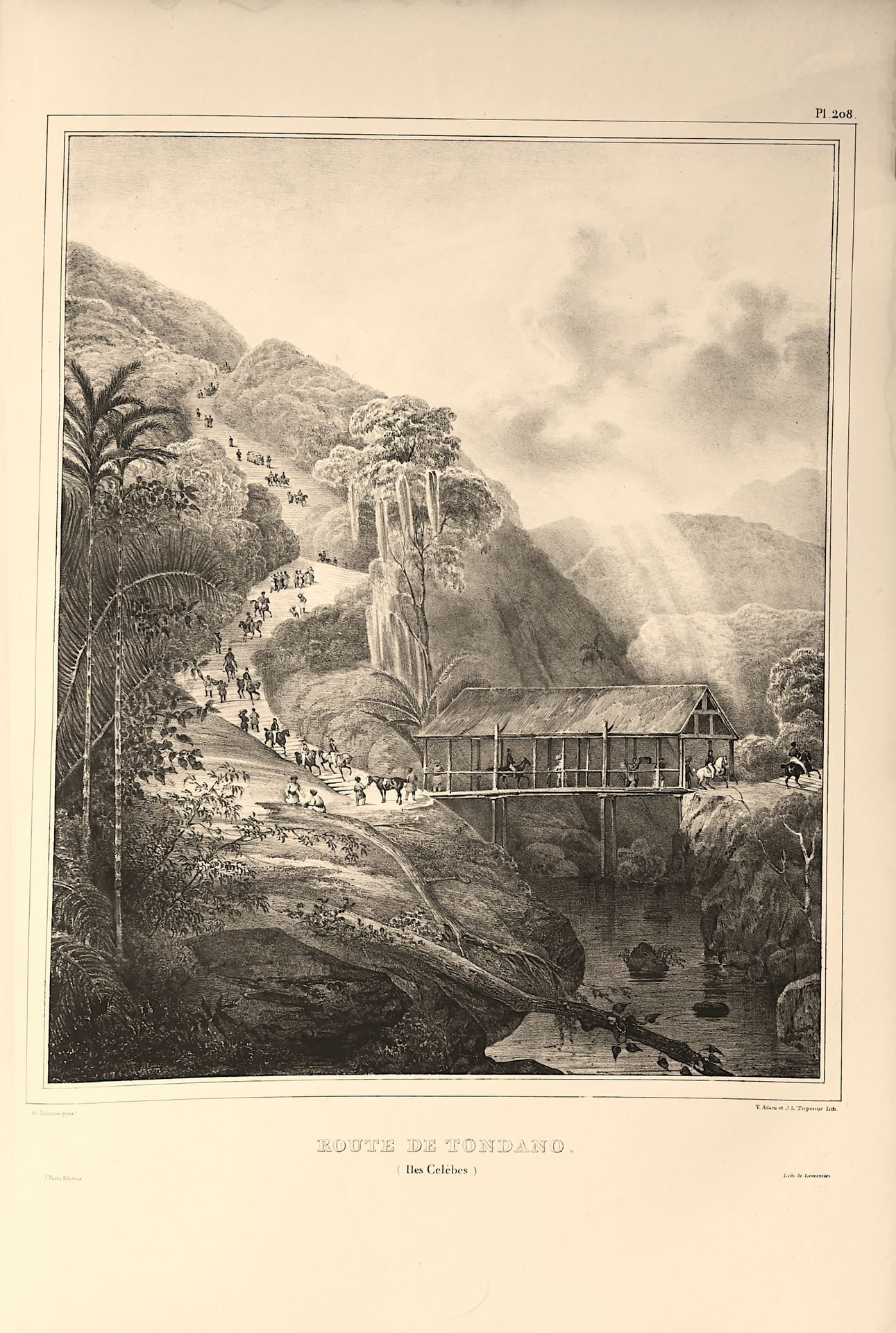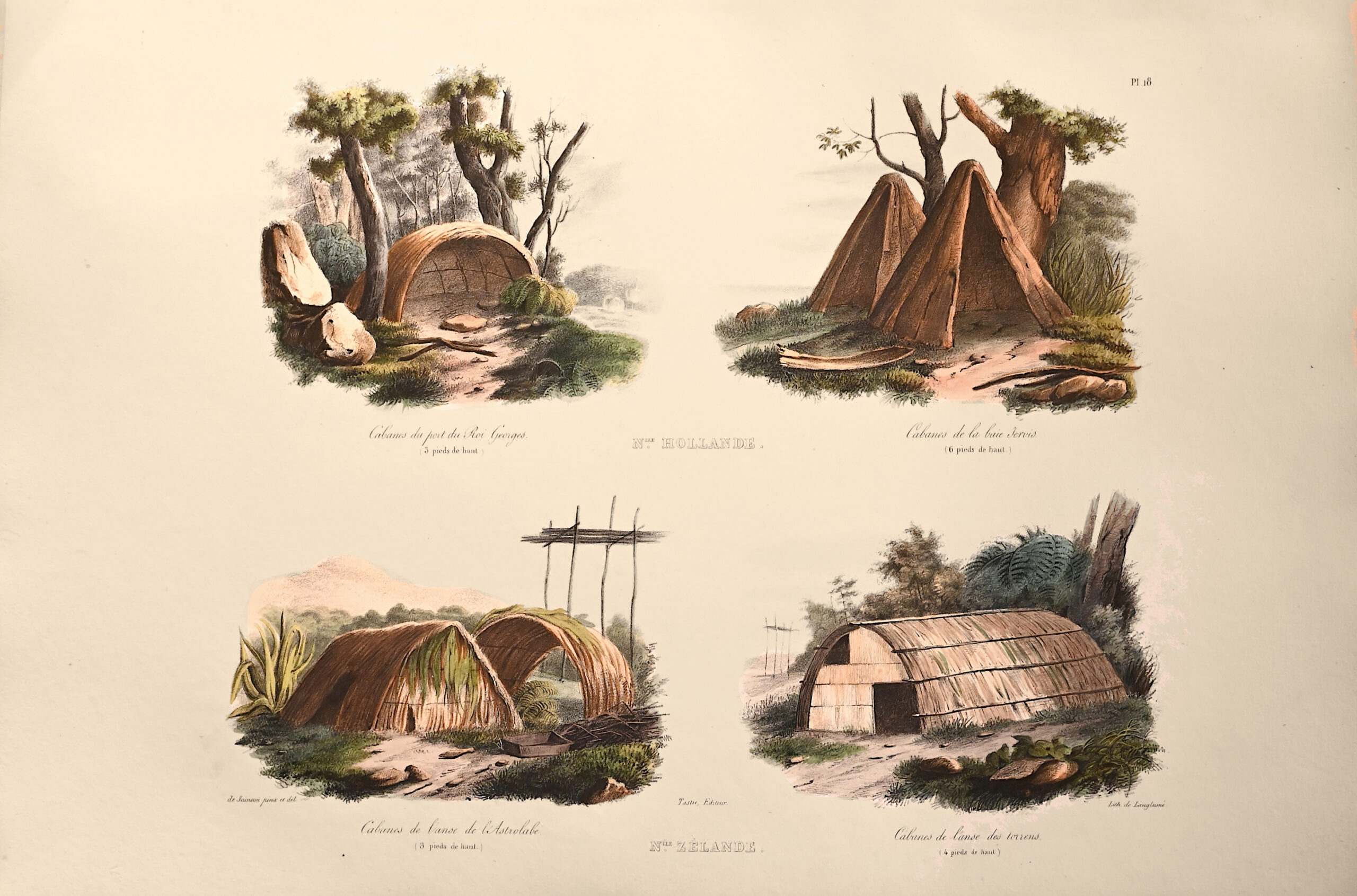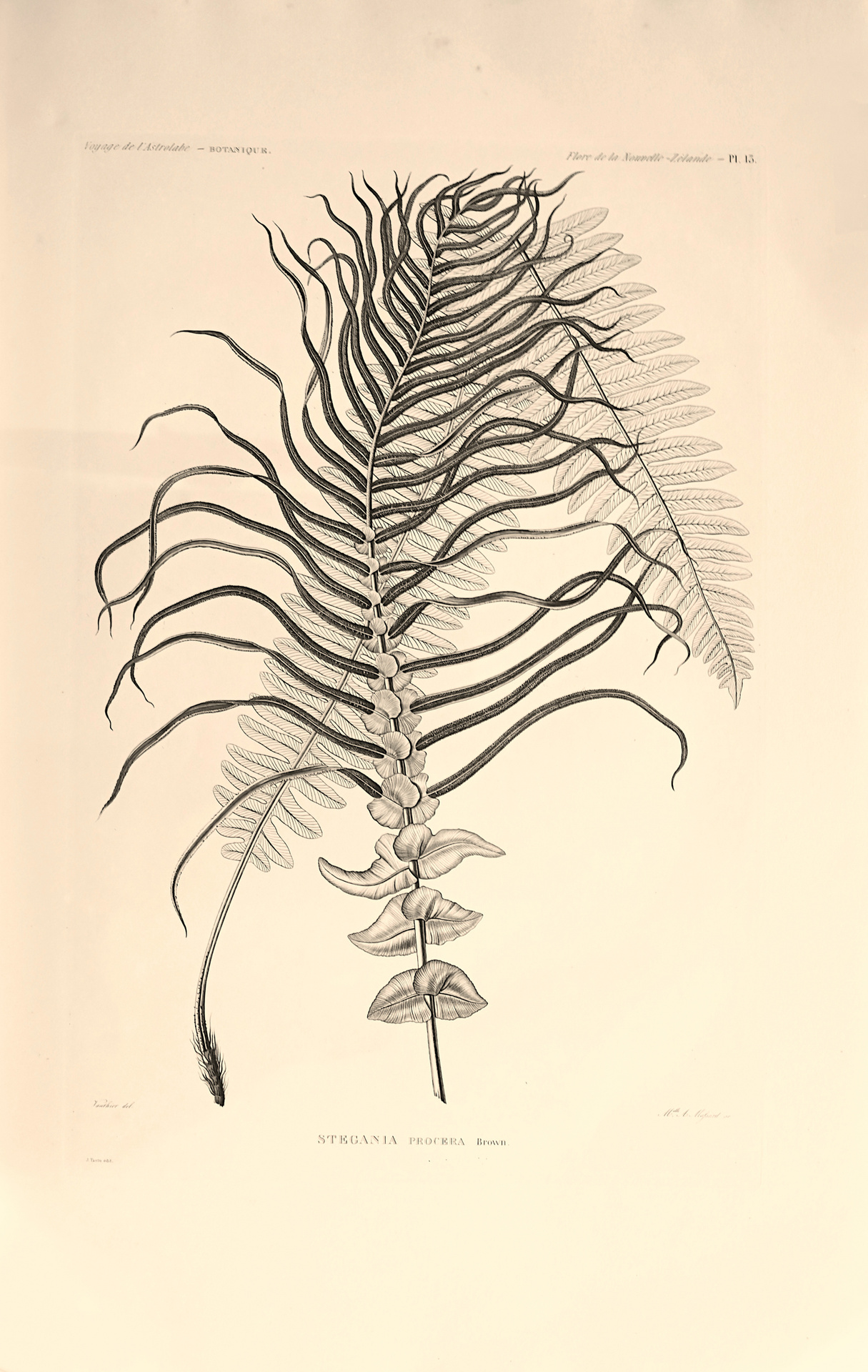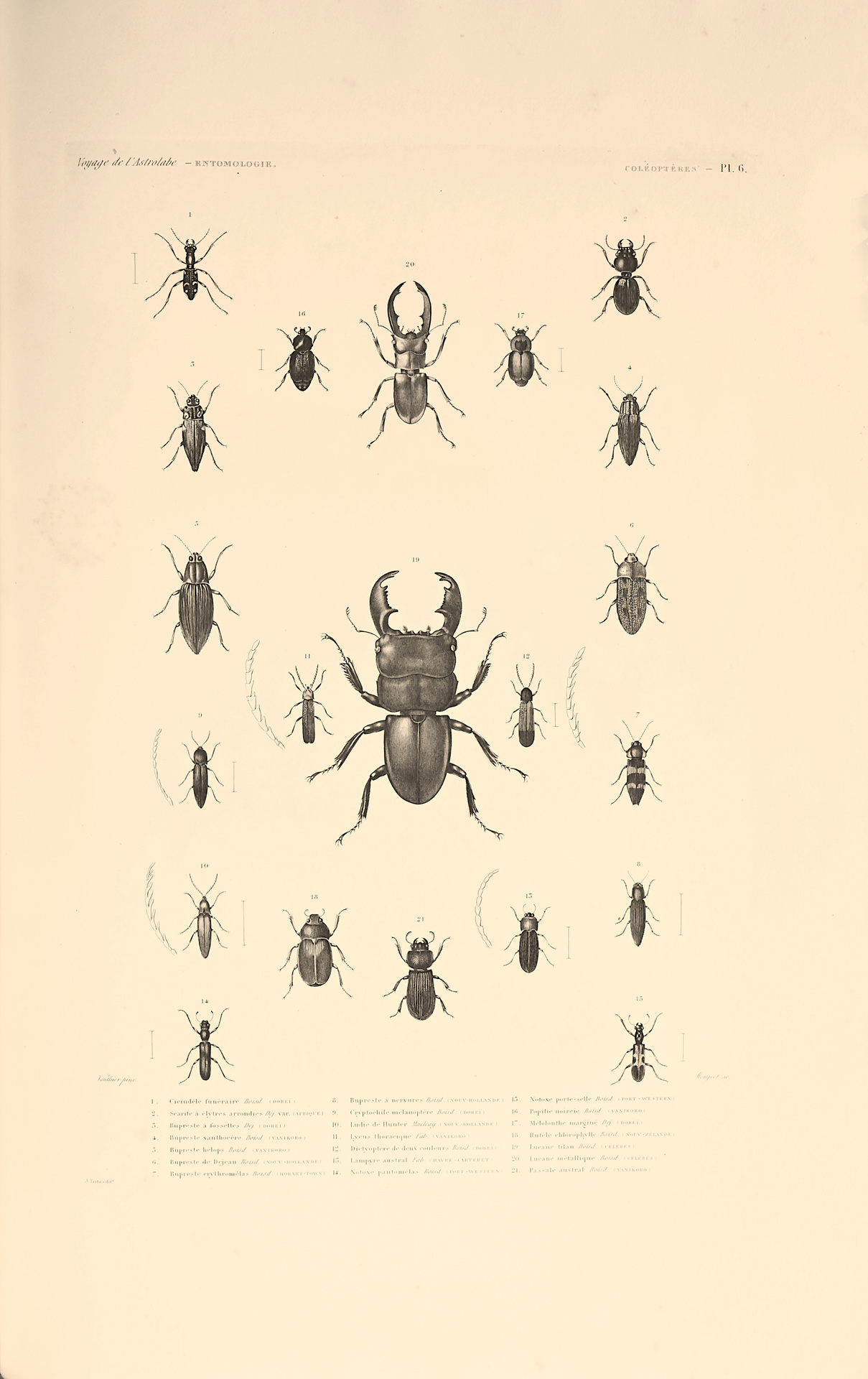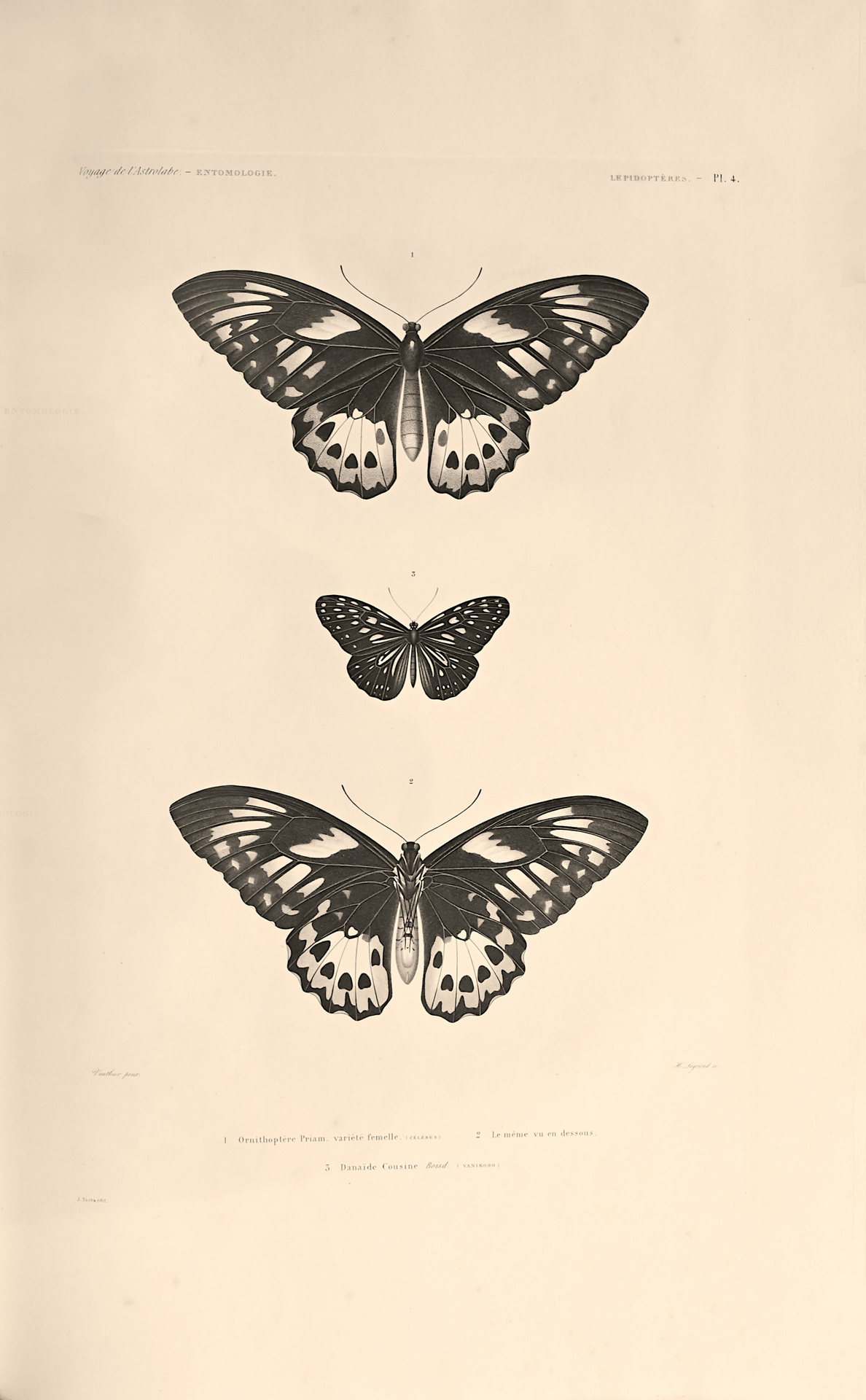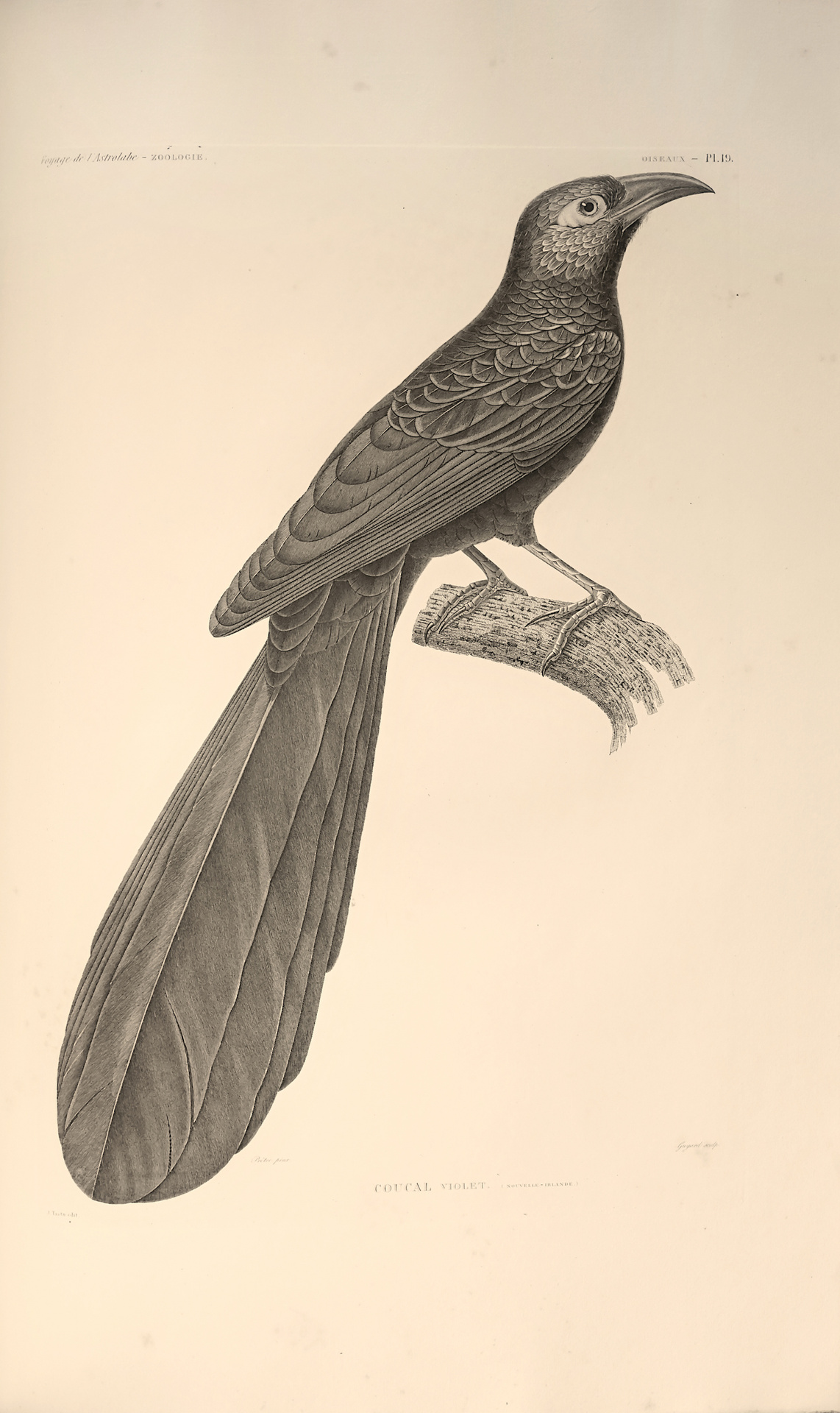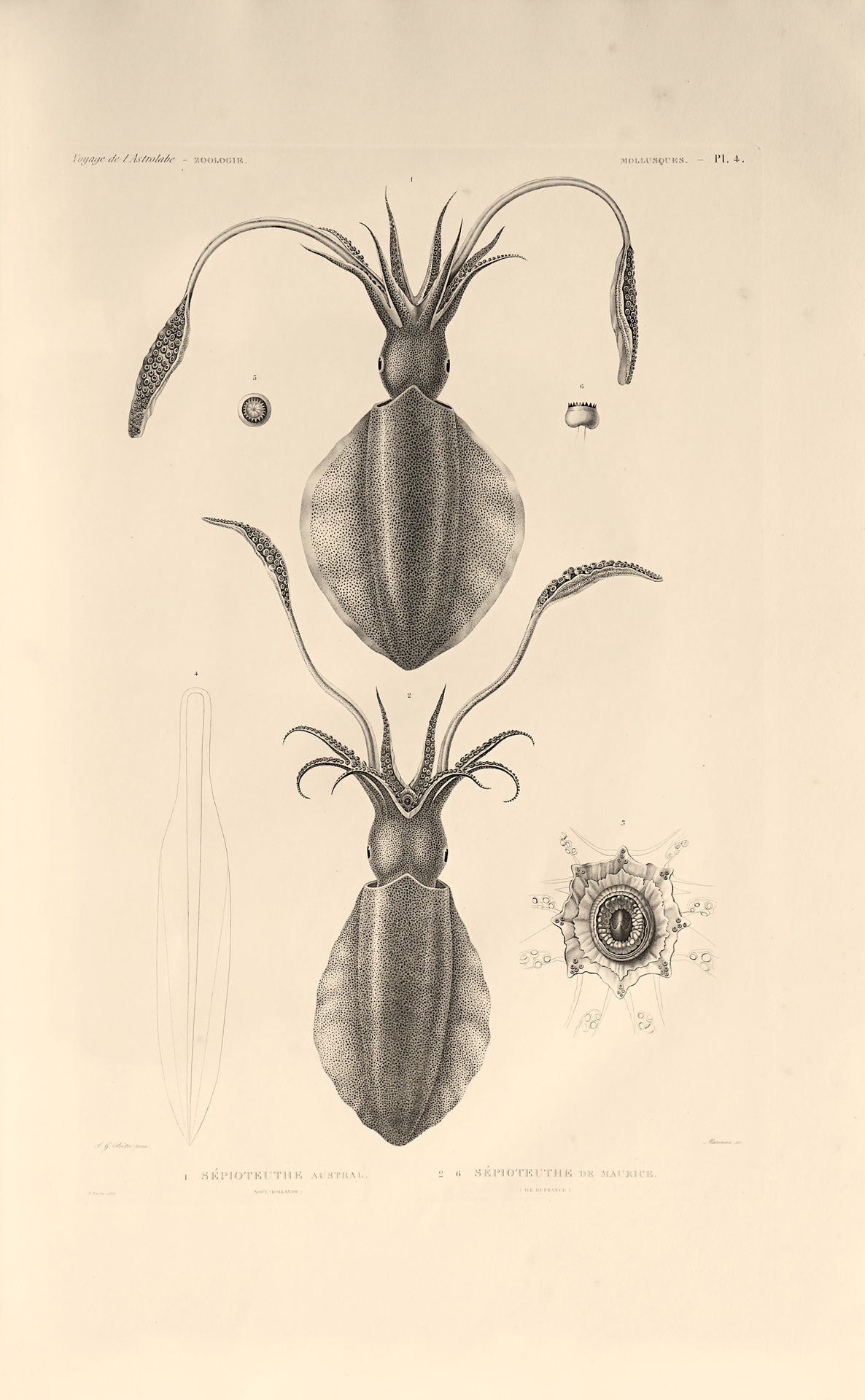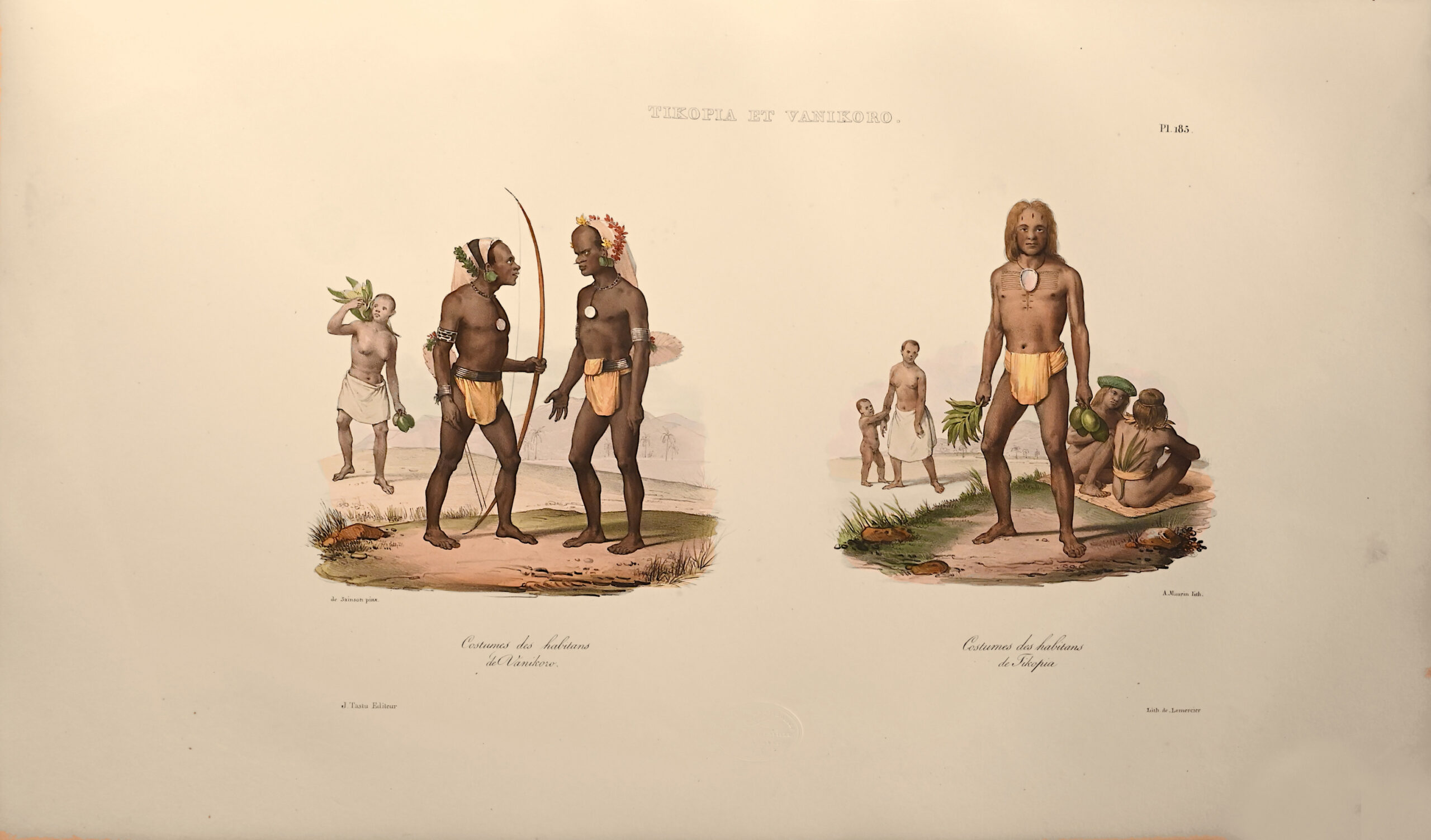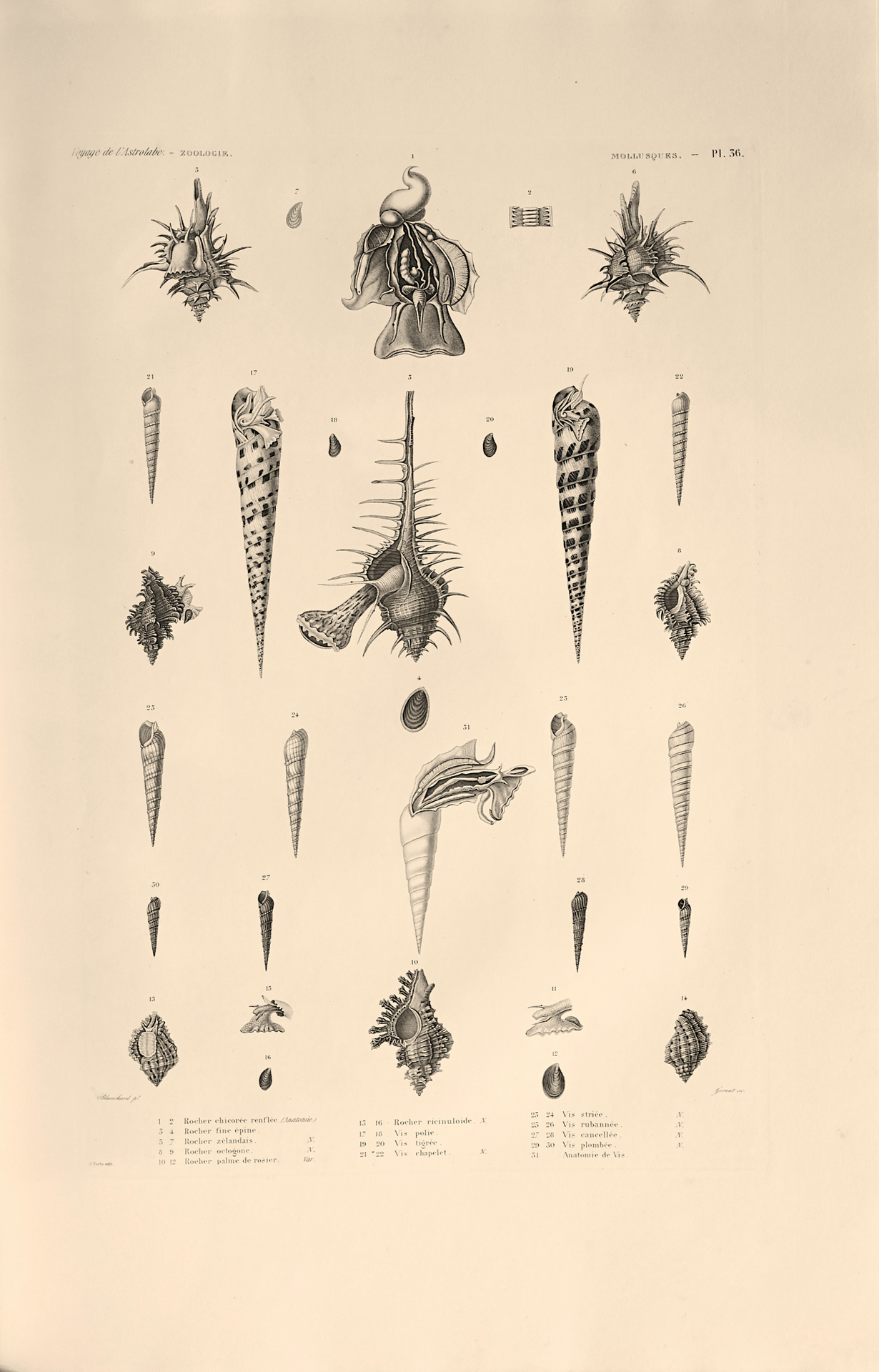Paris, J. Tastu, 1830-1834.
11 large in-8 volumes and 3 parts in 1 volume in-4 for the text, 5 parts in 4 volumes folio for the atlases; some foxing to the historical atlas. Half brown roan, flat spines decorated, green morocco lettering-pieces. Contemporary binding.
Dimensions of text volumes: 230 x 143 mm / 293 x 226 mm.
Dimensions of the atlases: 550 x 350 mm.
First edition of the most important French travel undertaken in the Pacific in the nineteenth century.
Bagnall, 1687 (part); Davidson, pp. 115-6 (part); Ferguson, 1341 (part); Hill 2, 504 (part); Hocken, p. 47 (part); Sabin, 21210 (part); Chadenat 60; Hill, p.88
This was Dumont d’Urville’s first expedition, which aimed at clarifying and completing the information on the Pacific islands already collected by Duperrey.
After passing the Cape of Good Hope, the Astrolabe stopped at Port Jackson, before heading towards New Zealand and in particular the Cook Strait. The navigators then explored the Tonga Islands, part of the Fiji archipelago, New England, New Guinea, Amboina, Tasmania, Vanikoro and Java.
Thanks to the important collections and observations brought back, the expedition of Dumont d’Urville was a great scientific success
The texts are illustrated with 9 plates for the History of the travel, 8 plates for the Zoology, 2 folding tables for the Nautical Observations; the atlases contain a portrait, 8 maps of which one is in color, and 239 plates (of which 57 are colored) for the History of the travel, 204 plates Of Zoology, 80 plates of Botany.
1° History – 10 parts in 5 vols. with engravings, and 2 atlases of 247 beautiful plates, black and colored: views, landscapes, portraits, types of natives, scenes of customs, etc.
2° Zoology – 6 parts in 4 vol. in-8 with 8 plates and Atlas of 192 colored plates.
3° Botany – 2 parts in 1 vol. and Atlas of 80 black and colored plates.
4° Entomology – 2 parts in 1 vol. and Atlas of 12 colored plates.
« The scientific voyage of the Astrolabe was arguably the most important and the most influential nineteenth-century French voyage to the Pacific. In addition to its comprehensive hydrographical work, especially in New Zealand, the Astrolabe scientists made extensive scientific observations and vast collections of natural history. The outstanding results of the expedition were published from 1830 to 1835. The atlases contain what are generally acknowledged to be some of the finest plates ever produced of the natural history, topography, and anthropology of the Australasian and South-west Pacific. Most of the fine topographical views are after Louis Auguste de Sainson. The official account of the voyage is rarely found complete ».
A good copy of this very important travel in the Pacific, preserved in its uniform contemporary bindings.
This collection lacks the 2 volumes of Philology text by Dumont d’Urville, and the hydrography atlas, of a larger size than the other atlases and often missing.
